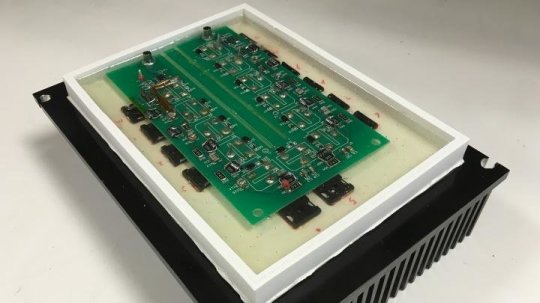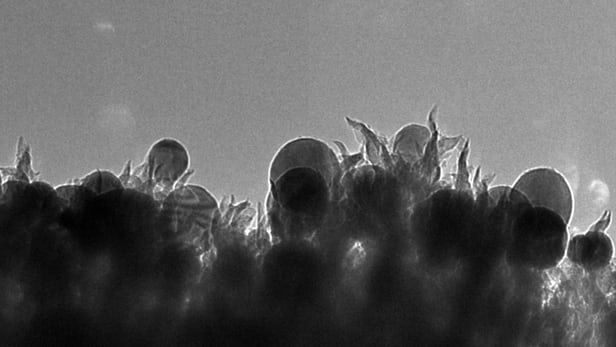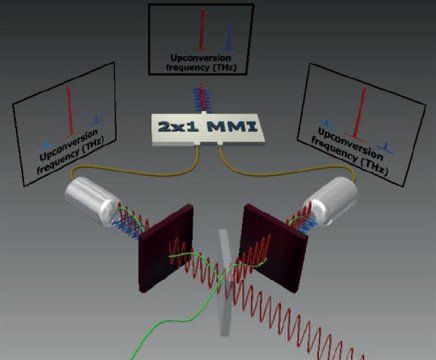
Ultra-thin ferroelectric material for next-generation electronics (19/10/2016)
'Ferroelectric' materials can switch
between different states of electrical polarization in response to an external
electric field. This flexibility means they show promise for many applications,
for example in electronic devices and computer memory. Current ferroelectric
materials are highly valued for their thermal and chemical stability and rapid
electro-mechanical responses, but creating a material that is scalable down to
the tiny sizes needed for technologies like silicon-based semiconductors
(Si-based CMOS) has proven challenging.

New cost-effective silicon carbide high voltage switch created (19/10/2016)
Researchers
have created a high voltage and high frequency silicon carbide (SiC) power
switch that could cost much less than similarly rated SiC power switches. The
findings could lead to early applications in the power industry, especially in
power converters like medium voltage drives, solid state transformers and high
voltage transmissions and circuit breakers.

T-rays will 'speed up' computer memory by a factor of 1000 (19/10/2016)
Scientists
have found a way to significantly improve computer performance. They propose
the use of the so-called T-waves, or terahertz radiation as a means of
resetting computer memory cells. This process is several thousand times faster
than magnetic-field-induced switching.

Electrons in graphene behave like light, only better (17/10/2016)
Electrical
and computer engineers have directly observed -- for the first time -- negative
refraction for electrons passing across a boundary between two regions in a
conducting material. First predicted in 2007, this effect has been difficult to
confirm experimentally. The researchers were able to observe the effect in
graphene, demonstrating that electrons in the atomically thin material behave
like light rays, which can be manipulated by such optical devices as lenses and
prisms. The findings could lead to the development of new types of electron
switches, based on the principles of optics rather than electronics.

Diamonds aren't forever: Team creates first quantum computer bridge (17/10/2016)
For
the first time on a single chip, scientists have demonstrated all the
components needed to create a quantum bridge to link quantum computers
together.

Flexible material puts full-color e-paper on display (17/10/2016)
E-ink displays may be easier on the eyes and less power-hungry than backlit LCDs used in most tablets and phones, but in the color department they're still playing catch-up. However, this could change thanks to a new type of material developed at Chalmers University of Technology that is flexible, ultrathin and can produce the full color range of an LED-backlit LCD, but requires ten times less energy than a Kindle's e-ink display.

Reversing the combustion process to convert CO2 into ethanol (17/10/2016)
The danger of the ever-increasing levels of carbon dioxide (CO2) in Earth's atmosphere has become one of the most pressing issues of our age. As such, much research has been conducted to find ways not only to reduce it, but also in ways to remove it. This has led to many schemes that simply sequester CO2 underground, or store it in volcanic rocks.

Key component for wireless communication with terahertz frequencies (14/10/2016)
An ultrahigh speed, wireless
communication network using THz instead of GHz frequencies is now one step
closer. Researchers have shown that it is possible to effectively transmit
signal waves with THz frequencies through the existing fiber optic network.

DNA-based single-electron electronic devices created (14/10/2016)
Nature has inspired generations of
people, offering a plethora of different materials for innovations. One such
material is the molecule of the heritage, or DNA, thanks to its unique
self-assembling properties. Researchers have now demonstrated a method to
fabricate electronic devices by using DNA. The DNA itself has no part in the
electrical function, but acts as a scaffold for forming a linear,
pearl-necklace-like nanostructure consisting of three gold nanoparticles.
Multi-function chip developed to enable next generation implantable device innovations (14/10/2016)
The development of novel integrated
circuits for next generation implantable medical devices has now been advanced,
according to an international team of researchers.









